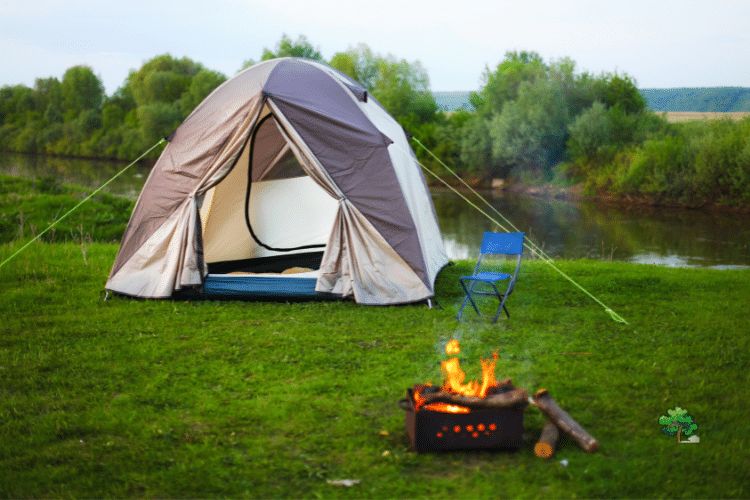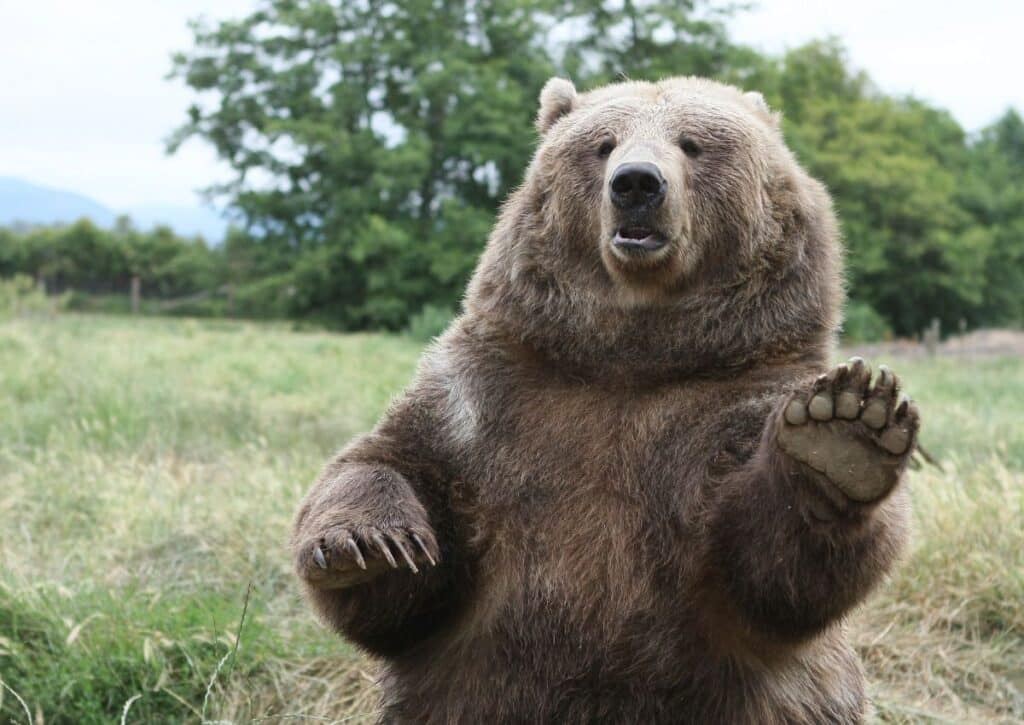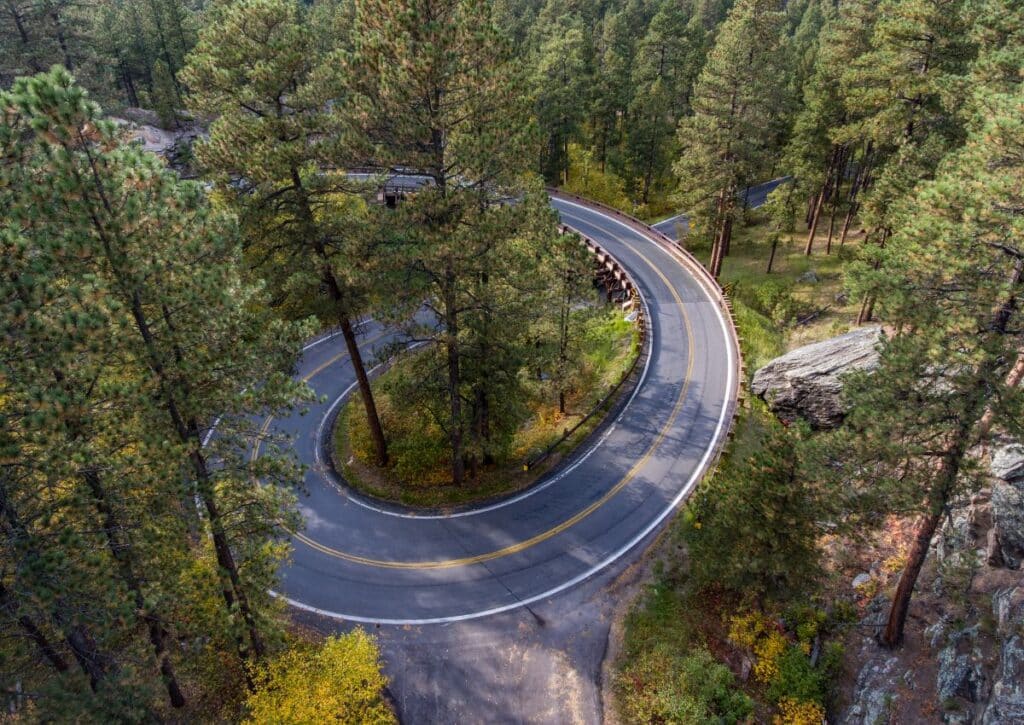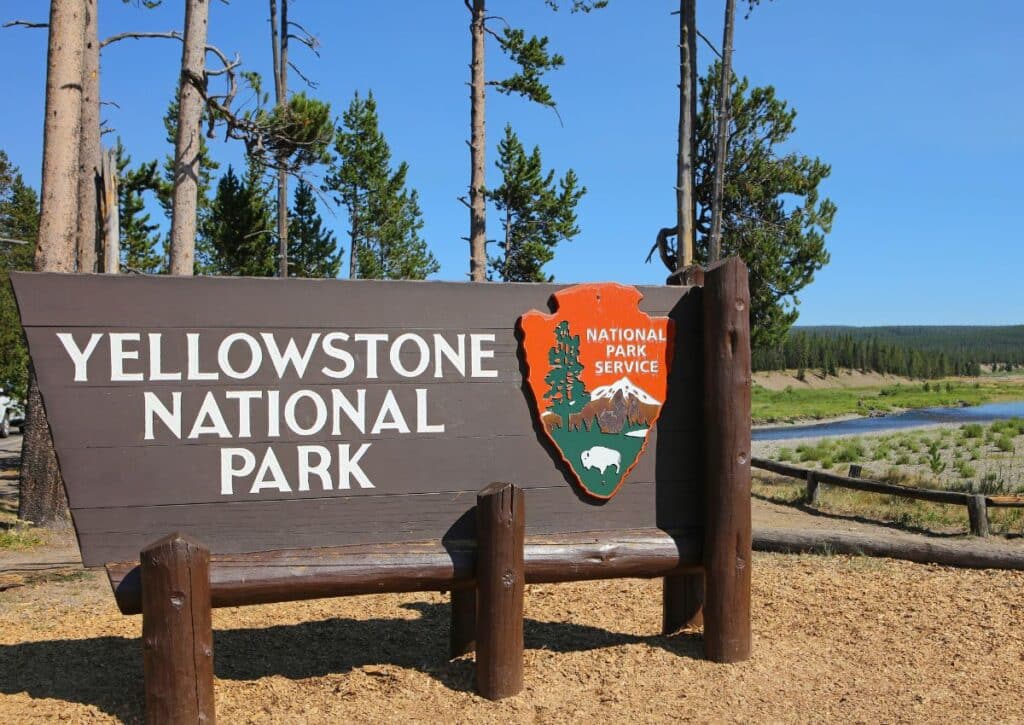Essential Camping Tips in Yellowstone National Park: safety, campsite choices, and bear encounters. Ensure a memorable and secure outdoor experience!
Yellowstone National Park is one of the best places in the world to camp. It’s beautiful, wild and full of amazing wildlife. You can’t help but feel like you’re immersed in nature when you set up your tent at night or hike through one of Yellowstone’s iconic meadows during the day—but there’s more to camping than just enjoying the scenery.
In order to have a good experience out there, it’s important that you follow some basic guidelines for how to behave while in bear country. These tips aren’t complicated or technical; they’re simply common sense things that will help keep both yourself and local wildlife safe while camping out in Yellowstone.
We always follow these basics when we go out exploring America’s fascinating outdoors.
Camp in designated campsites, if possible.
If you’re backpacking through Yellowstone, this is pretty much a must. The park has plenty of sites where you can pitch a tent or set up your hammock, and they tend to be well-maintained and away from wildlife trails (which is important).
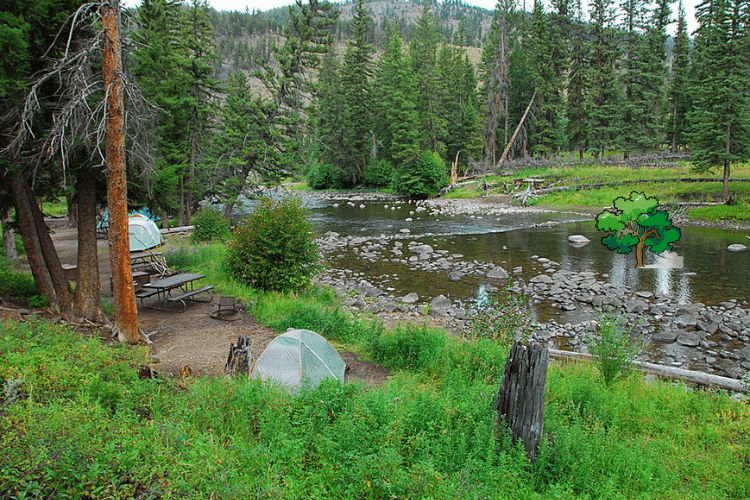
Get a map and take it with you on your hike.
Pick up a map and compass before hiking in Yellowstone National Park. A map is a visual representation of the terrain, while a compass is handy for navigation.
Cartographic maps are great for determining where you are in relation to other things—like landmarks or other campsites—and they can help keep you oriented during difficult weather conditions or when darkness falls quickly (which happens often in Yellowstone). But if all goes well, cartography won’t be necessary; simply look at your smartphone!
Bring your own firewood.
Campfires are a great way to roast marshmallows, keep warm in the evening, and bond with your fellow campers. But it’s important to remember that firewood can attract bears. In Yellowstone National Park alone, there have been over 100 bear sightings due to campfires and other human food sources like garbage cans or trash bins.
Make sure you bring enough firewood with you so that you don’t have to leave extra logs on the ground where it will attract bears (or other animals). If possible, bring dead branches from trees that can be burned but aren’t going to rot away any time soon—anything else will just be wasted energy when it comes time for packing up!
Don’t burn anything other than what is meant for firewood; things like rubber tires should never be burned because they release toxic fumes into the air when heated up by flames. This goes for anything plastic or synthetic as well—these items will contaminate soil once charred by heat radiation emitted during combustion processes which means they’re bad news all around!
Follow the rules for campfires.
Follow the rules for campfires. There are a few things to keep in mind when it comes to fires:
Campfires must be at least 100 feet from any surface that is not flammable and more than 15 feet from vegetation or trees.
If you’re camping with others, make sure someone has a fire extinguisher and some water on hand in case of an emergency.
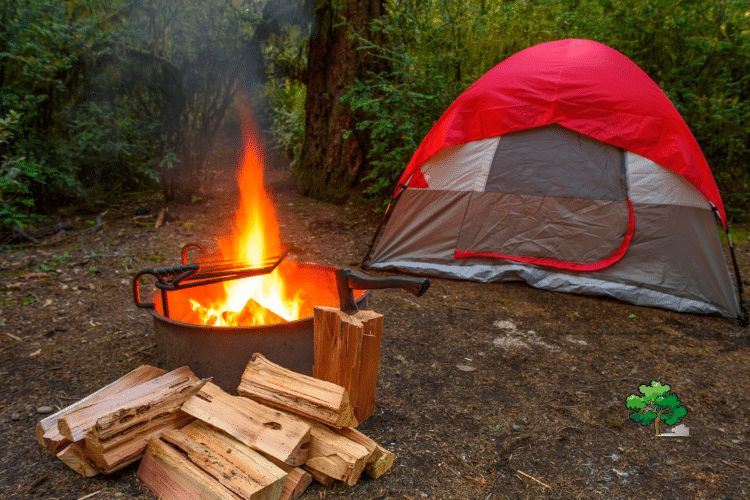
Never leave your campfire unattended, even if you’ve doused it with water—you never know when something could change and cause it to come back to life!
Keep your campfire small and under control. Use plenty of water to put out your fire and make sure it’s completely out before you leave.
Do not burn plastic, paper or other non-natural materials. They don’t burn completely, they emit toxic fumes and they can easily start another fire if they get away from you.
Always stay with your fire until it’s completely out — this means that there are no embers or coals left burning anywhere within the fire ring or pit (which is where people build fires). If you leave while your fire is still going, it’s against the law!
Keep all wood at least 12 inches away from any structure or combustible material like tents, tarps and vehicles. This includes camp stoves as well — never place them on the ground near tents or other structures!
Storing food in bear country.
Whether you’re camping in Yellowstone or not, there is a good chance that you’ll be storing food at some point. Whether it’s in your car, hotel room, tent or even just hanging out on the ground, it’s important to keep track of what kind of container and where exactly you’re storing your food. Here are some tips for keeping bears away from your campsite:
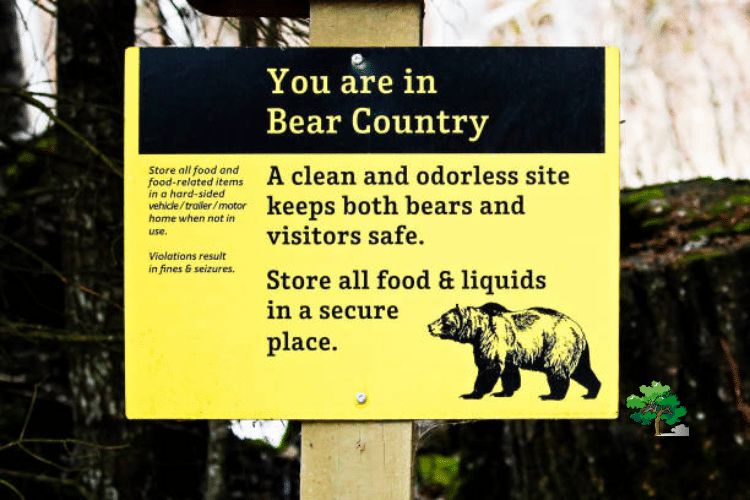
Bear-proof containers will keep most bears out but there are some clever ways around them. Some black bears can learn how to open these containers by watching others do it, so if one happens upon your site he may be able to get into your food supply! The same goes for grizzly bears; they’ve been known to pry open metal cans and tear through heavy plastic bags with their teeth when hungry enough.
A tree is an obvious place to hang items like tarps and sleeping bags—but not so much with food! Bears have been known to climb trees (and jump down) just for a snack! If possible, hang all items high off the ground using rope or string so they don’t fall easily into the reach of other animals such as raccoons who might take advantage if left unattended overnight…
Always read the campground rules.
Each of Yellowstone’s campgrounds has a set of rules that are posted at the entrance. These rules are there to protect you, the environment, and other campers.
They’re also there to make sure everyone has a good time. If you don’t follow these rules then you could be asked to leave the park or fined up to $1,000! So always read the campground rules before setting up your tent or RV.
Respect the wildlife.
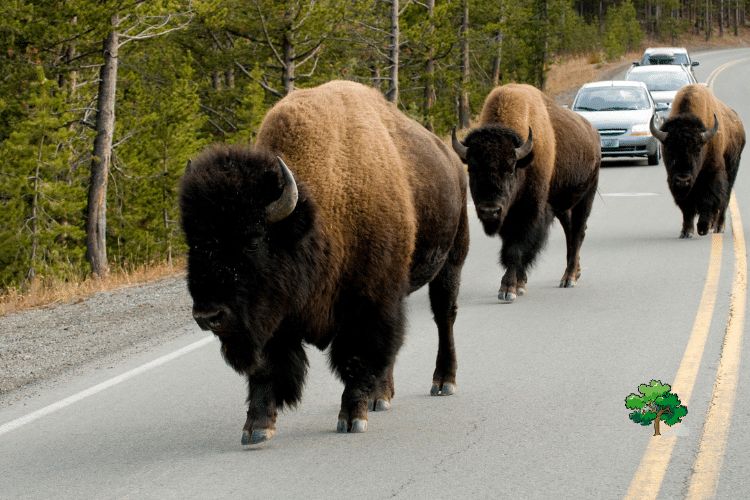
First, don’t approach wildlife.
It’s not only rude to get close to animals that are just trying to mind their own business, but it’s also dangerous for both you and them. Yellowstone is a national park, which means that many of the animals have learned to fear humans due to past experiences.
They’re often quick and nimble enough that they can outrun us if we run at them or chase after them (and sometimes they just want nothing more than peace and quiet). Not only could you be injured by an animal with sharp teeth or claws attacking you out of panic or defense, but there are plenty of ways for your experience as a visitor at Yellowstone National Park to be ruined by other visitors who chased after a bear cub or ran up close behind an unsuspecting moose. So please respect these creatures’ space—and yours!
Don’t feed the wildlife either!
One of my favorite parts about visiting Yellowstone was learning how important it is not only not approaching wild animals but also making sure they don’t have access to food from humans—that includes leftover snacks from your campsite or trail mix left unattended in your car—because once animals start eating human food sources like these on a regular basis, they can become dependent on them and then lose their ability (or desire).
Stay 100 yards (91 meters) or more away from bears and wolves and at least 25 yards (23 meters) away from all other animals, including bison and elk.
Do not approach or surround animals; they are wild and unpredictable.
Never feed any wildlife. Feeding wildlife damages their health, alters natural behaviors, and exposes them to predators and other dangers.
Pets may cause aggressive reactions in bears and other animals because they smell like humans. Keep pets leashed at all times when in developed areas of the park; pets are not permitted on trails or in backcountry areas (with some exceptions).
Freeze-dried food is amazing when camping.
Freeze-dried food is amazing when camping. The majority of the time you will be able to find food that is lightweight, easy to prepare, delicious and nutritious. It can also be stored for a long period of time without any refrigeration or freezer space needed.
While most freeze dried foods are expensive they do have an advantage over other types of dehydrated meals because they are more compact and require less water when rehydrating than many others types such as home made or canned products.
Don’t leave campsites unattended if there’s a fire going.
You should always have a fire going when you’re camping in Yellowstone. But make sure to keep an eye on it and make sure it doesn’t get out of control. Don’t leave your campfires unattended, and don’t leave food out where animals can get to it.
A lot of people think that they are smart enough to be able to leave their tent open while they go take a shower or something else like that, but the truth is that if you do this, there’s a good chance something will happen while you’re gone (and trust me, I’m speaking from personal experience here).
Use Ice Properly
Put ice in a leak-proof container that’s not glass, and then put it at the bottom of your cooler to keep food cold.
The ice will insulate the cooler from heat loss, so you don’t have to worry about your food spoiling. Just make sure to remove the ice before it melts and leaks into your cooler!
Be prepared for bears at all times.
Bears are a part of the Yellowstone National Park experience, and they can be an exciting part of your trip. However, being prepared for bear encounters throughout your time in the park will make it much safer.
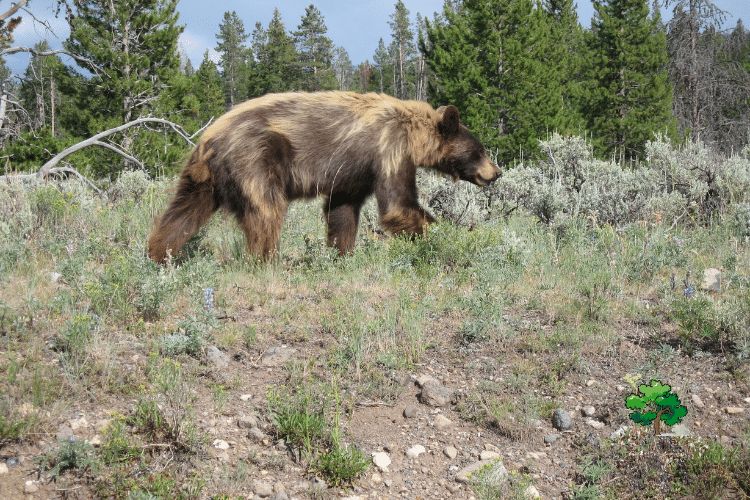
There are two types of bears in Yellowstone: grizzly bears and black bears. Grizzly bears have long shaggy brown fur and their name comes from the brownish-yellow or blond color of their throat hair.
Black bears are smaller than grizzly bears, with shorter fur that is usually black or brownish-black. Black bears also have white claws on their front feet and a white patch on each shoulder area.
Bears may be active at any time during the day or night, but they are most active at dawn, dusk and during the night. Be prepared for them by following these tips:
Do not feed or attempt to approach a bear! Feeding a bear will encourage further contact with humans and is against park regulations. It also puts both you and the bear at risk because they may become aggressive toward you if they associate humans with food.
Always carry bear spray whenever you are hiking in bear country. It’s easy to carry around since it fits into a small pouch on your belt loop.
If you see a bear:
Don’t panic, but keep your back to something that can protect you from the bear and try to make yourself look as big as possible without being aggressive. Basically, don’t run away or scream—it will only make things worse!
Stay calm. This is very important because staying calm will help keep the situation from escalating into something dangerous for both of you. Do not approach or surprise bears; let them know that they are safe around humans by speaking in soft tones and keeping your distance (at least 50 feet).
Never run away from a bear! Running may trigger their natural instinct to chase after prey, which could lead them directly toward people who might not be able to outrun them (like children).
Keep your distance and give it plenty of space so it doesn’t become aggressive toward you or another person nearby. If you cannot easily get out of its way, use noise (such as shouting “Hey bear!”) to scare it off before it gets too close and potentially attacks you — but only after determining that there isn’t any imminent danger.
These tips will help you have a great time when camping in Yellowstone
Keep safety first. A lot of people who go camping think it’s like going on vacation and forgetting about the outside world, but safety is still a major concern. Always check with rangers to find out what dangers are present in your campgrounds and how to avoid them.
Bring plenty of water, food and other supplies, even if you’re staying in car camping sites which have access to stores nearby.
Pack light! It’s all too easy to overpack on clothes or accessories that may not be needed for your trip, so make sure you’re only bringing enough things for your stay at Yellowstone National Park – plus an extra set just in case something happens (like a flood).
Plan ahead! Make sure there are no weather alerts before heading out onto the open roads with all those tents strapped down tight atop their cars (not recommended).
How do I prepare for camping in Yellowstone?
Preparing for camping in Yellowstone requires careful planning due to the park’s unique ecosystem and potential hazards. Firstly, research the best campgrounds that fit your needs, and make reservations if required. Familiarize yourself with park rules, especially those concerning wildlife. Pack clothing for various weather conditions, as temperatures can fluctuate greatly. Always carry bear-proof containers to store food and scented items. Maps and guides will be helpful for navigating and choosing hiking trails. Lastly, bring essential camping gear, first aid kits, and emergency supplies.
Is it safe to camp in a tent in Yellowstone?
Yes, tent camping in Yellowstone is generally safe, but there are inherent risks associated with wildlife and the natural environment. Campers should always maintain a clean campsite, store food securely to prevent attracting wildlife, and remain aware of their surroundings. Always keep a safe distance from wild animals and stay informed about recent bear activity in the area.
What campground should I stay at in Yellowstone?
Yellowstone offers a variety of campgrounds. The best one for you depends on your preferences. Some popular options include Madison, with its central location; Grant Village, close to Yellowstone Lake; and Slough Creek, known for wildlife viewing. Research each campground’s amenities and location to decide which suits your needs best.
How hard is it to get a campsite at Yellowstone?
Securing a campsite in Yellowstone, especially during peak season, can be challenging. Some campgrounds accept reservations, but others operate on a first-come, first-served basis. It’s advisable to book in advance or arrive early at non-reservation sites.
Do you need bear spray when camping in Yellowstone?
Yes, carrying bear spray and knowing how to use it is strongly recommended when camping in Yellowstone. It’s an effective deterrent in case of bear encounters.
What to do if a grizzly bear is outside your tent?
If a grizzly bear is outside your tent, remain calm. Speak in a firm tone to let the bear know you’re human. Avoid sudden movements. Never provoke or approach the bear. Wait for it to move away. If it doesn’t, use bear spray as a last resort if the bear becomes aggressive.
Are there gas stations inside Yellowstone National Park?
Yes, there are gas stations located within Yellowstone National Park. They can be found in areas like Mammoth, Tower Junction, Canyon Village, Fishing Bridge, Grant Village, and Old Faithful.
Where can I shower when camping in Yellowstone?
Showers are available for campers at some of the larger campgrounds, including Mammoth Hot Springs, Canyon Village, Grant Village, and Fishing Bridge RV Park.
Can you pull over and sleep in Yellowstone?
No, you cannot just pull over and sleep in Yellowstone. Camping or sleeping in vehicles is only permitted in designated campgrounds. Staying overnight outside of these areas can lead to fines and is a threat to personal safety.
Conclusion
We hope this guide has helped you to make the most of your trip to Yellowstone. We know that it’s not always easy to find good information on how to prepare for camping, so we wanted to put together a list of tips and tricks that will hopefully make your journey more enjoyable.
If you have any questions about what else we recommend bringing along on your trip or any other planning concerns, please don’t hesitate in contacting us! Happy Camping!

